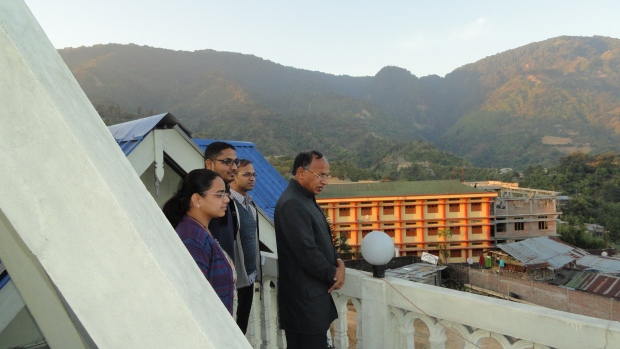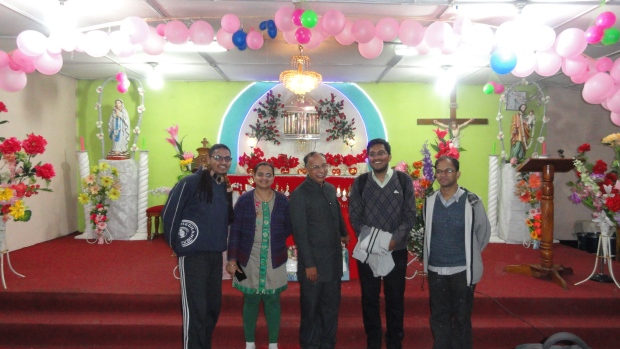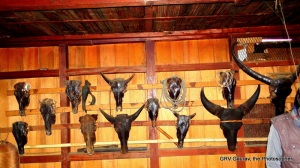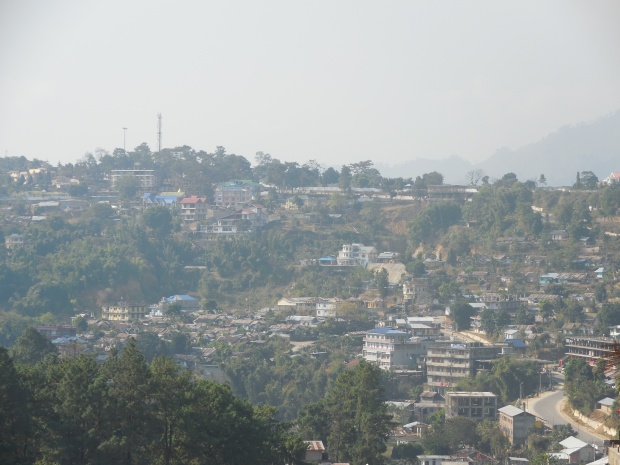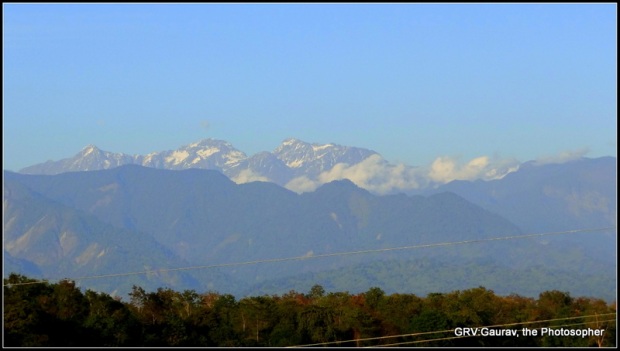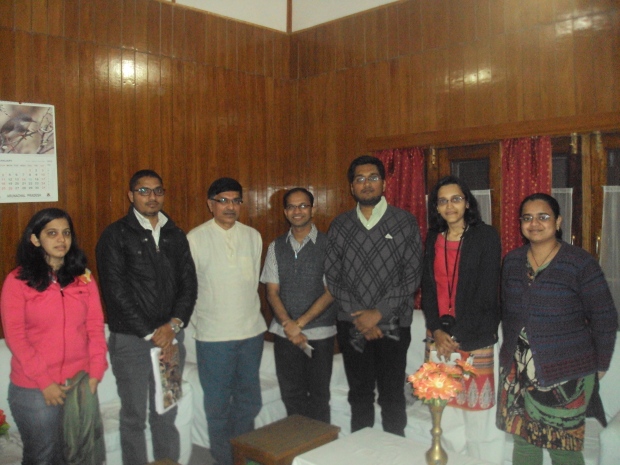Let’s finish the last leg of the Christianity in the NE region before turning our focus onto the RSS and its sister organisations’ work.

Father Tommy is a clever and imaginative person. He understands the popular psyche well. From Mithun Gate on the highway, the winding road reaches the Church about a km inside – with the bell tower standing tall. All along the road, he has erected many panels depicting Christian legends and myths in mural-form at regular intervals. On days like the Good Friday and other such occasions, local tribal people take this route after the Mass – one by one garlanding the panels – dancing and singing, playing traditional drums in a procession. This has become a kind of a ritual now and has been around for 20 odd years. The road is also unofficially named after Mother Mary. Nowadays Indians seem to have learnt such things – palpable and ritualistic – putting exclusive claim on physical, as if marking their territoriality. This is not the characteristic of Abrahmic religions alone anymore. Such things are put to use by clever persons imaginatively. All that it takes is some social as well as aesthetic understanding of religion and human psyche. And obviously – the persistence, being routed in locality for long enough that the people forget the time before your arrival.
If one thinks, such kind of pradakshina is not actually a Christian practice. Starting from circumambulatory paths around stupas and then Hindu temples, it was also adopted by Sufi saints in the dargahs of their walis and pirs (they call it tawaaf). But this adoption is not an isolated example. There was a huge debate amongst the early Jesuits in India about the strategies to be adopted for conversion (Source – Sumit Sarkar). There emerged two schools. One stressing puritanical approach of religion while other trying to modify the European mores to suit Indian customs by adopting Indian ways – like niranjan and dhoop in front of god’s image, writing pious hymns in Indian metrical styles, adopting local language for mass etc. Puritanical faction opposed such dilution tooth and nail and even filed a complaint with the Vatican or whichever their higher-ups were. How that debate shaped up I don’t know but the later approach sounds logical to me. More than religion, it’s always about a community, a parish. If something new is to be inserted in a pre-existing society, it must morph itself into a form recognizable + palatable to cause minimum disruption.

I was actually a little hesitant to open up the topic of conversion. But Ashishiji had no such qualms. He innocuously asked with all the innocent curiosity of the world on his face whether it’s true that the fathers are monetarily compensated for bringing people into their Church’s fold. Father Tommy was surprisingly free and frank. He neither looked hurt not angry, as if he was expecting this sort of question all the while. After a small pause he said that these are two different issues. Catholic Church, he said, certainly doesn’t encourage any such malpractice because belief in a faith can’t be bought. However they do believe in active conversion. Secondly, he said, there’re some ‘fringe Churches’ of other denominations bringing bad name to the Christianity as a whole damaging its reputation. He then voluntarily started talking about then-in-news ghar wapsi phenomenon. His argument in nutshell was that ghar wapsi is wrong and painful. However, the NE tribes don’t have any religion of their own. Their customs are backward, uncivil. It’s the duty of his Church to help them. And in the process if they choose to become Christian, it can’t be termed as ‘conversion’ because they lack any religion to start with. So, it’s a free market (his words) – all religions should come here and try to convert as many of them as possible. Whoever is better at it will get the most. The spirit of competition..!
I was aghast. I had thought of all people, he would have some respect for native tribal culture and belief system. For all his likeability and affability, he also had some streaks of dogmatism. But he was unabashedly open about his view and was very firm on his stance with all the logical arguments ready. I kind of liked it. His problem was that the tribals who are actually SC are denied the benefits of that status once they convert to Christianity. He wished that tribals should be able to keep the both statuses – SC and Religious minority benefits. Such dual-benefits are opposed from many other quarters. The arguments from both the sides are in public and the debate goes on.
The other people we came in contact with threw some light on not-so-nefarious activities. Kangir bhai said that the strategy adopted by Churches is not generally so much of a monetary allurement as it may cause a backlash sometime somewhere. There are other intelligent ways too. One example was a conversion of the woman in a house first. For some reason which I failed to understand, tribal women are easy to convert. And once they are converted, over time they bring the whole family along with. Women are thus always targeted. There must be some sociological and psychological reason to it, if at all it’s true. Second method he said was building huge and imposing churches in small bastis even if a person or two get converted. A single person in some remote basti actually doesn’t need such huge church and neither can he afford to build one. But he is requested to give some piece of land (as in Arunachal, outsiders can’t own it) on which in a short time a church with all the amenities and facilities is erected. Slowly, over a decade or so, the whole basti comes around. After all, no one gives them facility of any kind in their remote bastis, government hardly reaches there and the local church thus becomes a symbol of strength as well as provider of social services. It becomes the locus of community activity. Nagaland model of ‘communitisation’ is a well known now. There, so strong is their control over the local community and ground-level knowledge so upto-date that even the Government of India runs many of the social sector schemes through the churches for better targeting and reducing leakage. On the darker side however, this gives the church manipulating power and instances of denying government scheme benefits as punishment to those families missing on Sunday mass are not unknown.
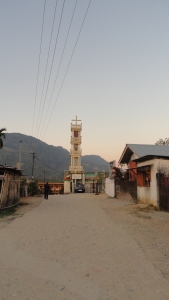
The RSS people moan over the supposed money the church receives from outside. They often compare the suvidha a pracharak gets with those available to father to draw the point home. Whatever that may be. As elsewhere, here too Church is involved in social service as well as conversion. It finally boils down to the motivations and inclinations of individual members of the denomination and thus sweeping generalisations must be avoided. The last thing I would talk here is in the praise of Catholics. This is such a determined and devoted community. Simply see the number of fathers they produce, number of educational and health institutions they run and compare it with their population in India (less than 2%). And they have been doing it for a long time. In the name of religious service if not nation’s service; but it helps the nation nonetheless.
To be continued…
(Next – RSS in Arunachal)



